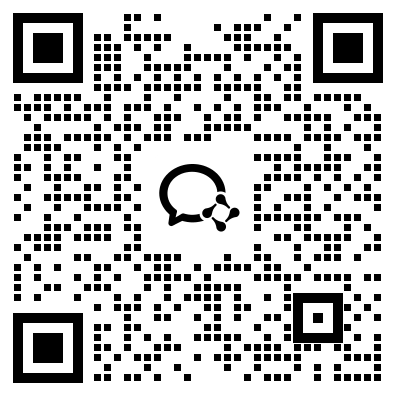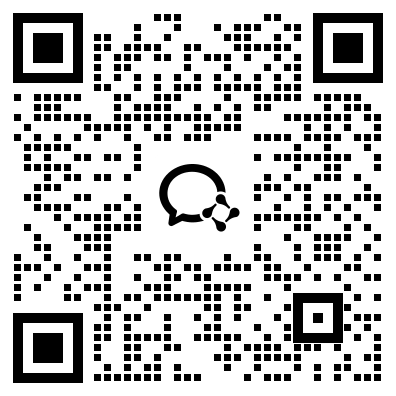特惠-26考研冲刺
特惠-27考研课
双证-在职硕士
免联考-同等学力
复试分数线
26复试全面指导
模拟复试面试
26考研-全套真题
26考研估分
保研-路线图
27考研-智能择校
27考研-英语测评
27考研-新大纲对比
热门-计算机择校

扫码加入训练营
牢记核心词
学习得礼盒
考研英语中阅读理解是重头戏,所占比例较大,考生在复习提高的过程中需要多付出精力。可是对于阅读理解来说,要提高并不是一蹴而就的事情,阅读能力需要日积月累,才能够提高速度和做题的技巧效率。为此,新东方在线小编为广大考生奉上20篇阅读理解,希望大家通过积累来最终提升综合阅读能力。
下面请看2015年考研英语阅读理解精选20篇(第十篇)
经典发明
TECHNOLOGICAL spin-outs from universities are usually expected to emerge from the engineering department, the school of medicine or the faculty of physics. At Oxford, however, they like to do things differently. The latest invention to emerge from the dreaming spires of England’s oldest university is the brainchild not of any of these academic Johnny-come-latelies, but rather of a group who trace their origins to Oxford’s medieval foundation: its classicists.
The multispectral-imaging scanner developed in the faculty of classics by Dirk Obbink, a lecturer in papyrology and Greek literature, and Alexander Kovalchuk, a mathematician and physicist, is able to detect traces of faded or hidden inks and paints in historical manuscripts, expose forged documents and art works, and highlight forensic evidence such as fingerprints and stains from bodily fluids. It will soon be available commercially from a firm called Oxford Multi Spectral.
Multispectral imaging works by scanning objects at a series of specific frequencies both within and beyond the visible spectrum. It is able to highlight details human eyes cannot normally see, either because they are swamped by the signal from other visible frequencies, or because they are not detectable by the rod and cone cells of the retina.
Classicists at Oxford first deployed the technique in 1999, to examine papyri discovered in a villa that was buried by the eruption of Mount Vesuvius in 79AD. They then applied it to previously illegible manuscripts called the Oxyrhynchus papyri, which were discovered in an ancient rubbish dump in Egypt. Documents deciphered using it include an epic poem from the 7th century BC by Archilochos and parts of a lost tragedy by Sophocles that dates to the 5th century BC.
Over the past decade Dr Obbink, Dr Kovalchuk and their team have both improved the hardware of multispectral analysis (which was originally developed by America’s space agency, NASA), and written more sophisticated algorithms to analyse what is seen. To start with, they had to rely on a high-resolution camera mounted on a frame, and a series of filters attached to a rotating wheel, to create a set of single-frequency images from the same perspective, in order that they could be merged as desired.
Now they have something that works like a flatbed document scanner, with a scanning head containing either six or 12 light-emitting diodes, each emitting light of a specific wavelength between 350 nanometres (ultraviolet) and 800 nanometres (infra-red). Each time the head moves across the instrument a different diode is switched on, and the results are recorded and fed into a computer.
Sometimes images taken at a specific frequency provide the best contrast. For example, iron-gall ink, commonly used on ancient documents, is transparent to infra-red light and most visible in the ultraviolet region of the spectrum. In other cases the clearest picture emerges by combining images from several frequencies. The iron-and-carbon-based ink used in one of the oldest Hebrew commentaries on the Old Testament is an example of this. Much of the book, which dates from the 10th century AD, was rendered illegible in the late 19th century by misguided academics who used shellac to varnish it. Combining data from different frequencies has highlighted the old ink and allowed the document to be read.
Besides looking at ancient scrolls, the multispectral scanner can compare things like bank notes and passports with reference documents of known provenance. Alternatively, as in the case of forensic evidence when the user does not know precisely what to expect, different combinations of frequencies can be examined to see if anything interesting emerges. As an added bonus, the new scanner also provides a novel retort to those who question the value of studying the classics in the modern world.
付出会有回报,提高需要努力,小编希望每一位决定了考研的考生都能够坚定自己的目标,并为实现目标努力奋斗,坚持不懈,只有这样才能收获丰厚的果实。2015年考研圆梦,大家一起努力。
课程推荐:2015 考研英语签约全程班、2015 考研英语签约全程班、2015考研政英签约全程联报班
书籍推荐:(2015)考研英语阅读理解基础进阶88篇、(2015)考研英语分类阅读高分进阶(120篇)、(2015)考研英语阅读理解精读100篇(高分版)
【英语阅读资料】这里有↑↑↑

 资料下载
资料下载
2014年-2025年考研历年真题汇总
发布时间:2024-04-25扫码添加【考研班主任】
即可领取资料包
考研大纲PDF电子版下载-历年(附解析)
发布时间:2024-04-25扫码添加【考研班主任】
即可领取资料包
2026年考研政数英备考资料zip压缩包
发布时间:2024-04-25扫码添加【考研班主任】
即可领取资料包
考研英语大纲词汇5500打印版(基础必备)
发布时间:2024-04-25扫码添加【考研班主任】
即可领取资料包
新东方在线考试模拟题【12套】
发布时间:2024-04-25扫码添加【考研班主任】
即可领取资料包
2026年考研专业课知识点总结
发布时间:2024-04-25扫码添加【考研班主任】
即可领取资料包
新东方考研资料下载地址
发布时间:2023-05-17新东方在线考研资料合集
下载方式:微信扫码,获取网盘链接

目录:
1.2013-2023年近10年政数英真题及解析PDF版(新东方)
2.2013-2023年专业课考试历年真题及解析PDF版
3.24考研复习备考资料大合集:大纲+备考资料+词汇书+考前押题+自命题
资料介绍:
1.2013-2023年近10年政数英真题及解析PDF版(新东方)
 、
、
2.2013-2023年专业课考试历年真题及解析PDF版


3.24考研复习备考资料大合集

3.24考研复习备考资料:考研大纲

3.24考研复习备考资料:政数英备考资料+自命题真题

------------------
考研备考过程中,尤其是专业课部分,参考往年的考试真题,对于我们的复习有更好的帮助。北京大学考研真题资料都有哪些?小编为大家进行了汇总。
北京大学考研真题资料-公共课

北京大学考研真题资料-专业课


以上就是关于“北京大学考研真题资料下载(历年汇总)”的整理,更多考研资料下载,请关注微信获取下载地址。
2024考研公共课必背知识点汇总
发布时间:2023-01-03扫码添加【考研班主任】
即可领取资料包
2013-2023考研历年真题汇总
发布时间:2023-01-03扫码添加【考研班主任】
即可领取资料包
考研英语大纲词汇(PDF可打印)
发布时间:2023-01-03扫码添加【考研班主任】
即可领取资料包
2024考研专业课知识点总结
发布时间:2023-01-03扫码添加【考研班主任】
即可领取资料包
2023考研政治 内部押题 PDF
发布时间:2022-11-16扫码添加【考研班主任】
即可领取资料包
徐涛:23考研预测六套卷
发布时间:2022-11-16扫码添加【考研班主任】
即可领取资料包
考研政数英冲刺资料最新整理
发布时间:2022-11-16扫码添加【考研班主任】
即可领取资料包
23考研答题卡模板打印版
发布时间:2022-11-16扫码添加【考研班主任】
即可领取资料包
2023考研大纲词汇5500PDF电子版
发布时间:2022-07-28扫码添加【考研班主任】
即可领取资料包
考研历年真题(公共课+专业课)
发布时间:2022-07-28扫码添加【考研班主任】
即可领取资料包
考研英语阅读100篇附解析及答案
发布时间:2022-01-07扫码添加【考研班主任】
即可领取资料包
新东方考研学霸笔记整理(打印版)
发布时间:2022-01-07扫码添加【考研班主任】
即可领取资料包
2001-2021年考研英语真题答案(可打印版)
发布时间:2022-01-07扫码添加【考研班主任】
即可领取资料包
考研英语词汇5500(完整版下载)
发布时间:2022-01-07扫码添加【考研班主任】
即可领取资料包
2022考研政审表模板精选10套
发布时间:2022-01-07扫码添加【考研班主任】
即可领取资料包
历年考研真题及答案 下载
发布时间:2021-12-09扫码添加【考研班主任】
即可领取资料包
考研政审表模板汇总
发布时间:2020-06-17扫码添加【考研班主任】
即可领取资料包
近5年考研英语真题汇总
发布时间:2020-06-17扫码添加【考研班主任】
即可领取资料包
考研英语大纲词汇5500
发布时间:2020-06-17扫码添加【考研班主任】
即可领取资料包
2022考研12大学科专业排名汇总
发布时间:2019-11-21扫码添加【考研班主任】
即可领取资料包
2023考研政治复习备考资料【珍藏版】
发布时间:2019-11-21扫码添加【考研班主任】
即可领取资料包
考研英语万能模板+必备词汇+范文
发布时间:2019-11-21扫码添加【考研班主任】
即可领取资料包
考研数学一、二、三历年真题整理
发布时间:2019-11-21扫码添加【考研班主任】
即可领取资料包

添加班主任领资料
添加考研班主任
免费领取考研历年真题等复习干货资料

 推荐阅读
推荐阅读
为了让考研的同学更高效地复习考研英语,新东方在线考研频道整理了“考研英语1阅读错几个后的复习计划”,考研的同学可以了解一下,希望对大家有所帮助。
为了让考研的同学更高效地复习考研英语,新东方在线考研频道整理了“考研英语二阅读篇数及题型分析”,考研的同学可以了解一下,希望对大家有所帮助。
为了让考研的同学更高效地复习考研英语,新东方在线考研频道整理了“考研英语阅读理解的总结与反思”,考研的同学可以了解一下,希望对大家有所帮助。
来源 : 网络 2025-06-13 08:02:00 关键字 : 考研英语阅读理解
为了让考研的同学更高效地复习考研英语,新东方在线考研频道整理了“提高考研英语一阅读理解的五大策略”,考研的同学可以了解一下,希望对大家有所帮助。
为了让考研的同学更高效地复习考研英语,新东方在线考研频道整理了“探索考研英语阅读文章的逻辑结构”,考研的同学可以了解一下,希望对大家有所帮助。
来源 : 网络 2025-06-12 08:03:00 关键字 : 考研英语阅读

 资料下载
资料下载
扫码添加【考研班主任】
即可领取资料包
扫码添加【考研班主任】
即可领取资料包
扫码添加【考研班主任】
即可领取资料包
扫码添加【考研班主任】
即可领取资料包
扫码添加【考研班主任】
即可领取资料包
扫码添加【考研班主任】
即可领取资料包
新东方在线考研资料合集
下载方式:微信扫码,获取网盘链接

目录:
1.2013-2023年近10年政数英真题及解析PDF版(新东方)
2.2013-2023年专业课考试历年真题及解析PDF版
3.24考研复习备考资料大合集:大纲+备考资料+词汇书+考前押题+自命题
资料介绍:
1.2013-2023年近10年政数英真题及解析PDF版(新东方)
 、
、
2.2013-2023年专业课考试历年真题及解析PDF版


3.24考研复习备考资料大合集

3.24考研复习备考资料:考研大纲

3.24考研复习备考资料:政数英备考资料+自命题真题

------------------
考研备考过程中,尤其是专业课部分,参考往年的考试真题,对于我们的复习有更好的帮助。北京大学考研真题资料都有哪些?小编为大家进行了汇总。
北京大学考研真题资料-公共课

北京大学考研真题资料-专业课


以上就是关于“北京大学考研真题资料下载(历年汇总)”的整理,更多考研资料下载,请关注微信获取下载地址。
扫码添加【考研班主任】
即可领取资料包
扫码添加【考研班主任】
即可领取资料包
扫码添加【考研班主任】
即可领取资料包
扫码添加【考研班主任】
即可领取资料包
扫码添加【考研班主任】
即可领取资料包
扫码添加【考研班主任】
即可领取资料包
扫码添加【考研班主任】
即可领取资料包
扫码添加【考研班主任】
即可领取资料包
扫码添加【考研班主任】
即可领取资料包
扫码添加【考研班主任】
即可领取资料包
扫码添加【考研班主任】
即可领取资料包
扫码添加【考研班主任】
即可领取资料包
扫码添加【考研班主任】
即可领取资料包
扫码添加【考研班主任】
即可领取资料包
扫码添加【考研班主任】
即可领取资料包
扫码添加【考研班主任】
即可领取资料包
扫码添加【考研班主任】
即可领取资料包
扫码添加【考研班主任】
即可领取资料包
扫码添加【考研班主任】
即可领取资料包
扫码添加【考研班主任】
即可领取资料包
扫码添加【考研班主任】
即可领取资料包
扫码添加【考研班主任】
即可领取资料包
扫码添加【考研班主任】
即可领取资料包

 阅读排行榜
阅读排行榜
 相关内容
相关内容